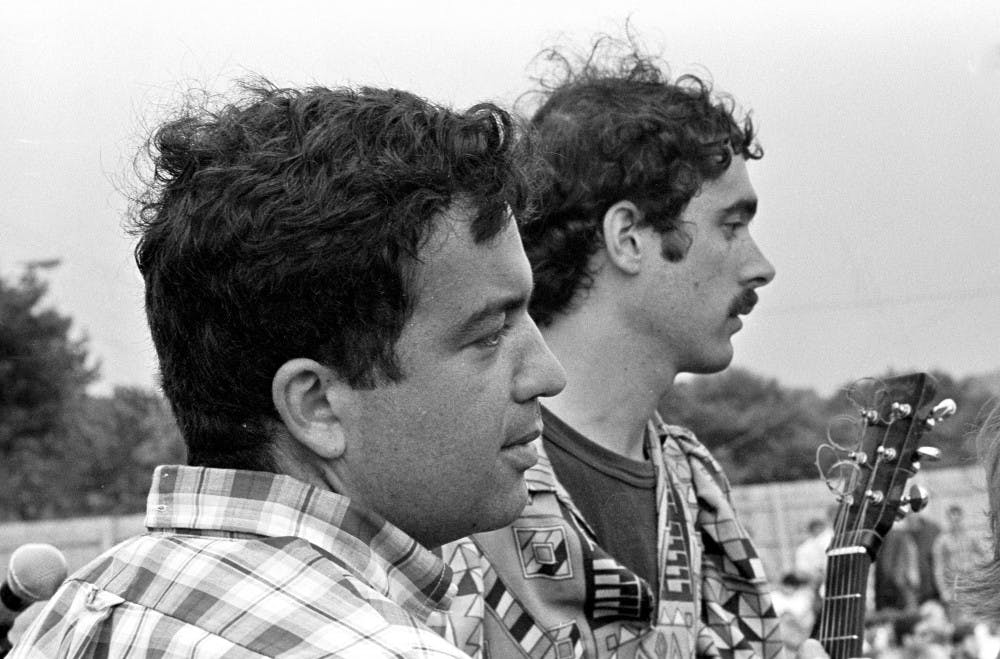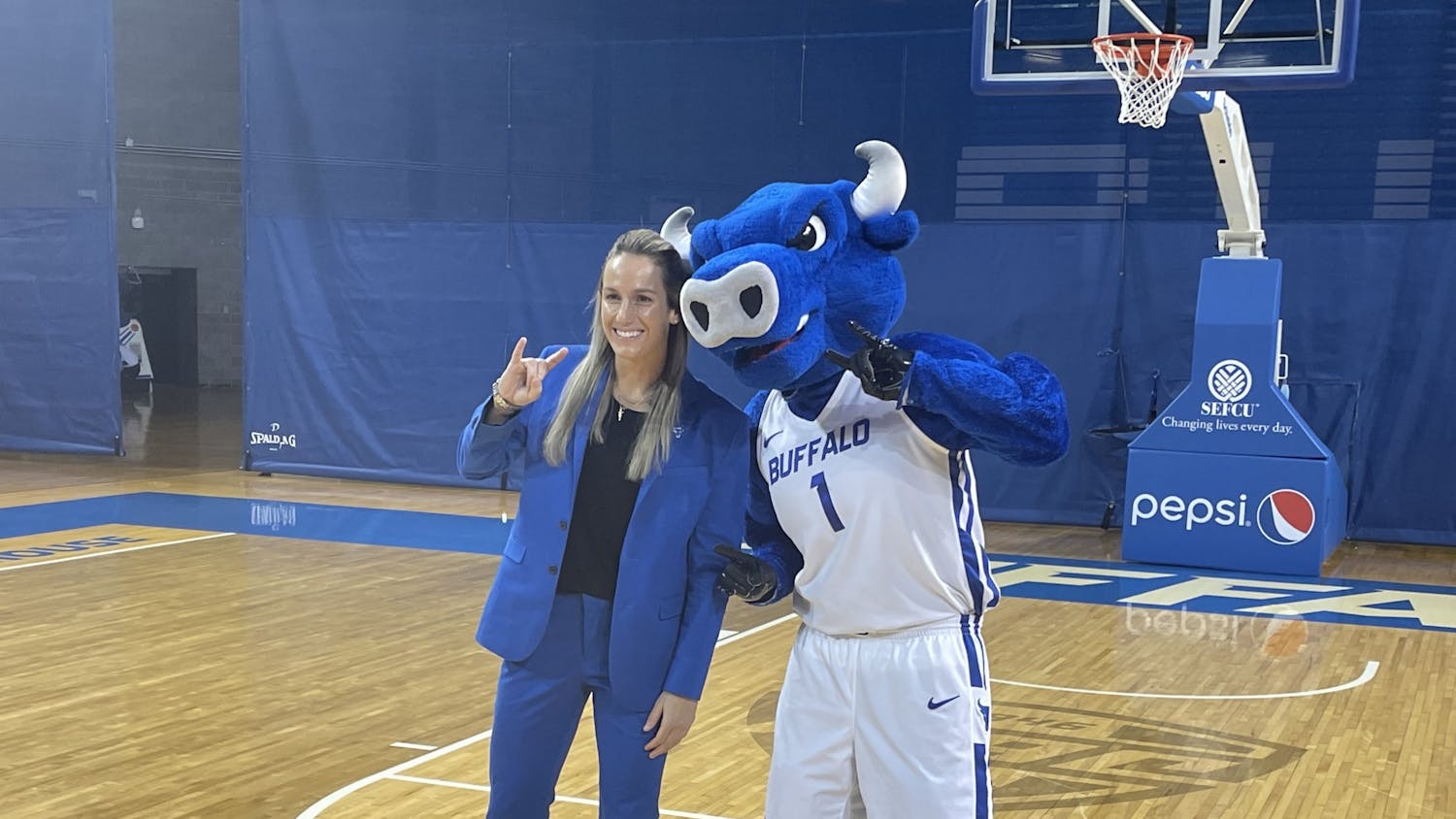It’s hard to dismiss a 52-year-old story but Professor Bruce Jackson isn’t afraid to try.
When Bob Dylan played his first-ever electric set at the 1965 Newport Folk Festival in Newport, Rhode Island, legend insists that the crowd booed him.
Dylan’s decision to go electric infuriated the crowd, according to this popular belief. After three songs, the folk singer left his band backstage, returned with an acoustic guitar and reminded fans why they fell in love with him in the first place.
SUNY Distinguished Professor Bruce Jackson was there on July 25,
Jackson, a director
In this Spectrum Q&A, Jackson discusses where he was when Dylan took the stage, why the audience booed and why he believes the legend gained traction.
Dylan is scheduled to come to Shea’s Performing Arts Center on Nov. 18 at 7:30 p.m.
Q: How’d you become involved in the ’65 Newport Folk Festival?
A: I wrote a long article on Newport for Sing Out! Magazine. In the course of it, I interviewed all the directors and I read all the board documents. At the end of it, Pete Seeger -- who I knew -- said to the board “Bruce knows more about Newport now than any of us.” It was because of Pete. I think I was the only non-musician on the Newport board.
Q: And how did you know Pete Seeger?
A: That happened several years earlier. I was a graduate student in comparative literature at Indiana University. I played guitar and somebody called me one night and said “Pete Seeger’s giving a concert and his 12-string didn’t arrive. Can he borrow yours?” This guy said “I’ll come over and pick it up” and I said “Bullsh*t. I’ll deliver it. I want to meet Pete Seeger.” So I did and we got to talking… That’s how we first got to know each other. And then the Sing Out!
Q: Back to the festival, where were you located when Dylan hit the stage?
A: I’m trying to remember. I read the article and I said I was in the wings. I may have been in the pit right in front of the stage. I spent so much time during those years either in the wings or in the pit. That’s where I always was [but] I went back and forth. I was very close to where they were.
Q: For those who didn’t read your account, can you explain what you recall from the evening?
A: What’s great here is I’m not relying on my memory. With the tape from the stage and the
For some reason, rumors went out that he was booed because he went electric. Shortly after, he appeared in Forest Hills with Joan Baez. And when he came out electric, they booed him. I think it had become a thing. “We boo Dylan when he goes electric.” And because people have heard that story. You know how fans are, and the audience was mostly pretty young; teenagers and college undergraduates. It’s the equivalent of wearing a baseball cap with the beak in the back. The utility of a baseball cap is to keep the sun out of your eyes. [Booing Bob Dylan] was a fad. For about 2 or 3 years, everybody was doing it.
What makes me so sure of what I’m saying is that tape, and it’s the only physical evidence of what happened that night. Everything else is
A lot of people tell the story of Pete Seeger wanting to cut the audio cable. Pete said that’s not true. He was furious that the band wasn’t
Q: Do you think Peter Yarrow could’ve phrased it differently to prevent the reaction?
A: I think he might’ve but I don’t know if it would’ve done any good. The audience simply wanted more Dylan. He was very hot that year...
Peter was in the difficult position of moderating a concert where a lot of the audience wanted to hear primarily one person and that was Bob Dylan. But it wasn’t [just] a Bob Dylan concert.
I think all the talk about acoustic and all that crap poured gasoline on the fire. That was no help at all. As I listened to him on the tape I thought he was patronizing Dylan.
Q: He kept mentioning that Dylan was going to come back out to the stage acoustic. Do you think that was purposeful?
A: I don’t know but I think that’s a part of what fed into it. But the reason he was coming back acoustic was
Q: I know you mentioned in your piece that Dylan had already dove into the electric sound. So do you think that’s the major flaw in the urban legend?
A: Yes, I do. Remember, there were plenty of other electric guitarists at Newport. A lot of the traditional blues musicians played electric. The audience loved them. It really wasn’t the thing of electric versus acoustic. It was “how much Dylan we’re gonna’ get.” Somehow that got translated into a story of electric versus acoustic.
It’s reminding me of what’s going on right now with kneeling at the NFL games.
Q: So why do you think the story caught on with the Electric Dylan Controversy?
A: That is a question I cannot answer. There are a lot of rumors that catch on that fact cannot undo. There’s a great movie, “The Man Who Shot Liberty Valance” with John Wayne and Jimmy Stewart. Jimmy Stewart gets credit for having shot a badman and he becomes the first U.S. Senator from the territory.
But actually, John Wayne shot him across the street with a rifle. A young reporter learns the true story and his editor is there as he’s telling it. The editor throws the story in the fire. He says “when the facts conflict with the legend, go with the legend.” I think that’s what happened here, people went with the legend.
Brenton Blanchet is the assistant arts editor and can be reached at brenton.blanchet@ubspectrum.com
Brenton Blanchet is a junior communication major and The Spectrum's managing editor. His hobbies include collecting vinyl, jogging and meeting Mariah Carey.

The Spectrum elected Brenton Blanchet as editor-in-chief for the 2019-20 academic year. Blanchet has been writing for The Spectrum since 2016.





